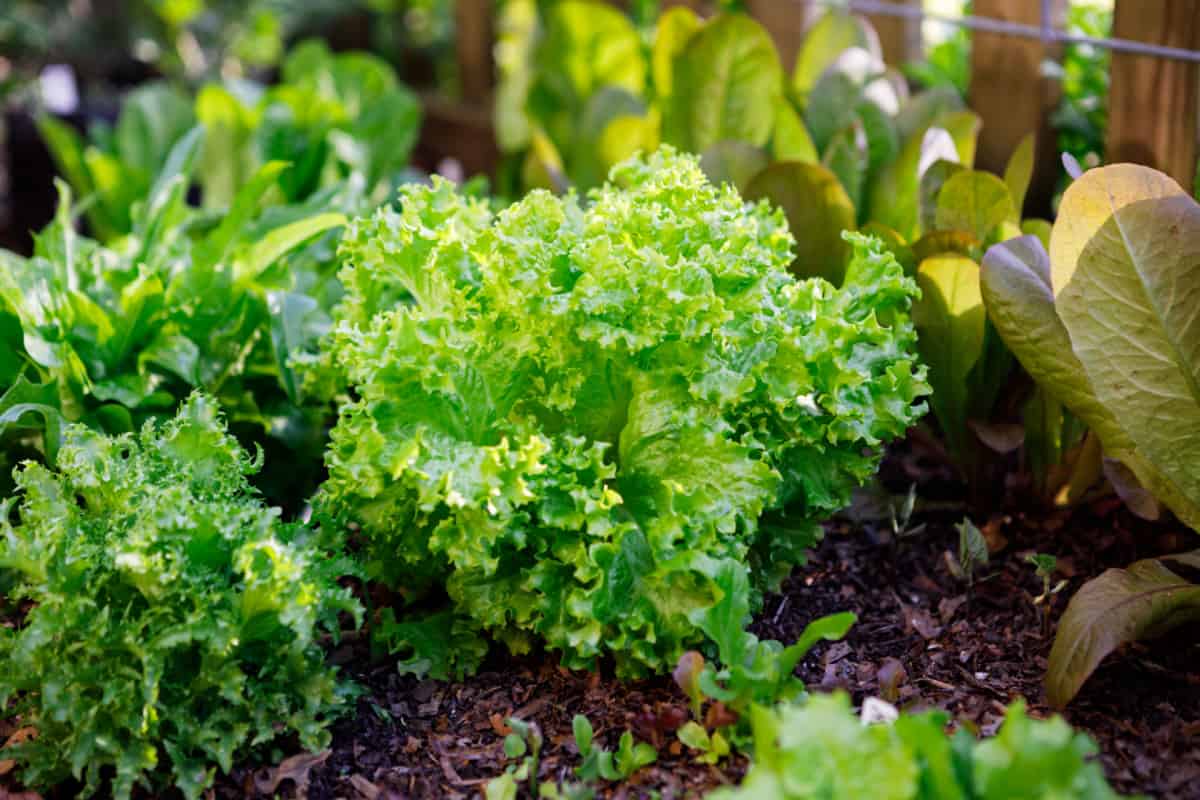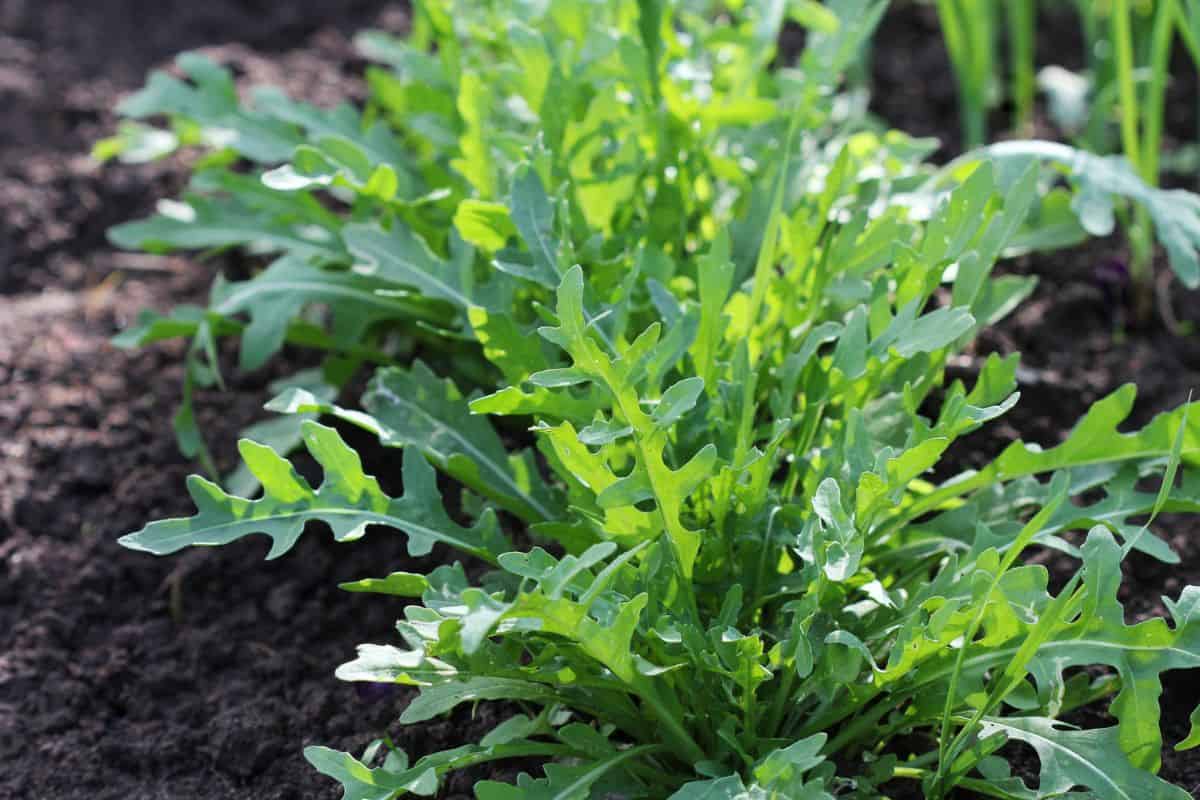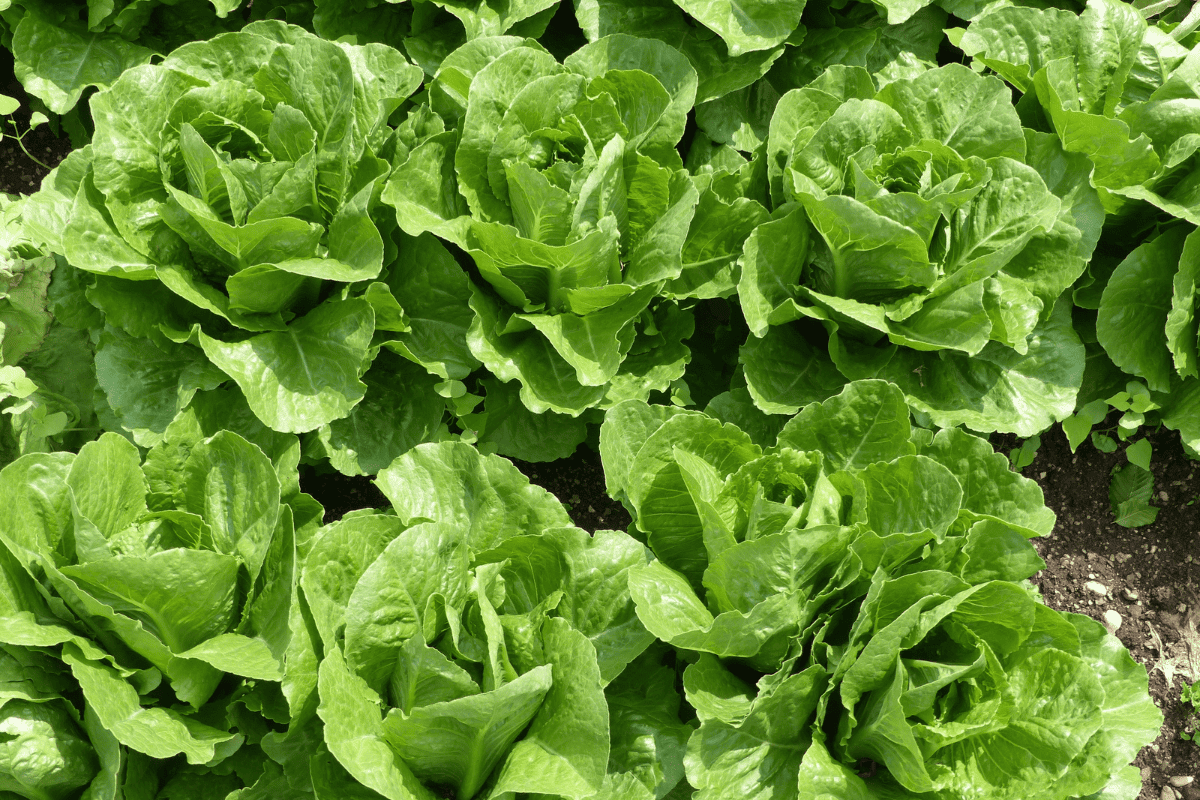Salad lovers—welcome to a greens showdown that's as delicious as it is nutritious!
In one corner, we have the piquant punch of arugula, a peppery powerhouse hailing from the mustard family, Brassicaceae.
In the other, the cool, calming presence of lettuce, a versatile hero boasting varieties from the Asteraceae family.

This quick guide is here to dish out the lowdown on the leafy world's finest and help you decide which green deserves the top spot in your salad bowl!
While they might seem like identical twins in the great family of leafy greens, there's more to arugula and lettuce than meets the eye.
Arugula, a.k.a. the rocket or roquette, sashays in with a tangy taste, leaving a lively hint of pepper on your palate.
Meanwhile, lettuce, ever the mild-mannered choice, offers a soothing crunch with variations such as romaine, butterhead, and iceberg.
Sure, both greens strut their stuff with low calories and high nutrients But did you know that arugula is like that overachieving sibling, packing just a bit more punch with certain vitamins and minerals?
The question then arises: which one to choose? The vivacious arugula with its zest, or lettuce with its comforting crunch?
As you embark on this flavorful journey of discovery, remember that your choice has the potential to remix your meal.
So, dare to experiment, mix and match, and find the perfect blend that makes your tastebuds do a happy dance!
Appearance and Texture
Arugula and lettuce are both leafy greens that are often used in salads, but they have distinct differences in appearance and texture.
In this section, we will explore the appearance and texture of arugula and lettuce in more detail, highlighting their unique characteristics and how they can impact the taste and presentation of your dishes.
Arugula
Arugula, also known as rocket or roquette, is a leafy green in the mustard family with a distinct peppery taste.

When you observe arugula, you'll notice that its leaves are dark green with a somewhat smooth texture and a dandelion-like appearance.
The leaves are generally smaller and more delicate than lettuce, and they tend to have a slightly curled or ruffled edge.
Arugula is often found in salads, where its bold flavor adds interest to the dish.
Lettuce
In contrast, lettuce exhibits a wide range of appearances and textures depending on the variety you choose to grow or consume.

Some common types of lettuce include:
Romaine
Romaine lettuce features elongated, dark green leaves that are crisp and crunchy. The texture of romaine is noticeably firm, with a sturdy rib running down the center of each leaf.
Butterhead
As the name suggests, butterhead lettuce has soft, buttery-textured leaves. The leaves are usually light green, with a mildly sweet flavor.
Iceberg
Iceberg lettuce is known for its tight, compact head and rounded leaves. The leaves are crisp and pale green, offering a refreshing crunch and a mild taste.
So, when it comes to arugula and lettuce, the appearance and texture of the two leafy greens vary significantly.
Arugula has a more distinctive, peppery flavor and a smaller, more delicate leaf structure.
In contrast, lettuce offers a range of appearances and textures, from crunchy romaine to buttery-textured butterhead varieties, providing diversity in your salads and dishes.
Watch this video below to see what each type looks like:
Nutritional Differences
While both arugula and lettuce are healthy options for a balanced diet, they have different nutritional profiles that can affect your overall health.
In this section, we will take a closer look at the nutritional differences between these two leafy greens, including their vitamin and mineral content and their potential health benefits.
By understanding these differences, you can make informed choices about which greens to include in your meals.
Arugula Nutrients
Arugula can be eaten raw or cooked, and it provides an excellent source of vitamin K, which helps stop bleeding.
Along with vitamin K, arugula provides essential dietary nutrients, such as vitamins, minerals, and fiber.
The fiber found in arugula can be beneficial for your cardiovascular and gastrointestinal health.
Arugula contains other nutrients such as:
- Protein: 0.26g per cup
- Total fat: 0.07g per cup
- Carbohydrate: 0.36g per cup
- Energy: 2.5 calories per cup
- Sugars: 0.2g per cup
- Dietary fiber: 0.16g per cup
- Calcium: Ca (mg) per cup
Lettuce Nutrients
Lettuce also contains essential dietary nutrients, such as vitamins, minerals, and water.
Like arugula, lettuce provides fiber that is beneficial for your cardiovascular and gastrointestinal health.
In addition to its nutritious content, lettuce is low in calories and high in nutrients, making it a helpful choice when trying to maintain a healthy weight.
Be sure to explore different types of lettuce—such as romaine, iceberg, or butterhead—for a variety of nutrients and flavor profiles.
However, lettuce is generally known for being low in calories and high in water content.
Some of the common nutrients found in lettuce include:
- Protein: varying amounts depending on the type of lettuce
- Total fat: minimal amounts
- Carbohydrate: varying amounts depending on the type of lettuce
- Energy: low calorie counts
- Vitamins: sources of vitamins A, C, and K
- Minerals: calcium, iron, and potassium
When choosing between arugula and lettuce, consider the specific nutrients you want in your diet.
While both greens offer a range of nutritional benefits, arugula tends to be higher in vitamin K, while lettuce can provide more variety in vitamins and minerals.
Ultimately, incorporating a mix of both greens into your salads can ensure you get the most nutritional benefits.
Culinary Uses
Arugula and lettuce are popularly used in dishes such as salads, pizzas, sandwiches, and other snacks and side dishes.
Packed with nutrition, they are also a staple for health-conscious individuals and those who are on a diet.
Arugula Dishes
Arugula, with its peppery taste and tender leaves, adds a punch of flavor to your dishes. Arugula can be eaten raw or cooked, making it a versatile addition to your meals.
You can use it raw in salads or as a topping on pizzas and sandwiches.

When shopping for arugula, look for fresh leaves that show no signs of wilting or spoiling.
Enjoy arugula in salads, sandwiches, or even cooked dishes for a peppery taste and added nutrients.
Try mixing arugula with other salad greens like spinach or romaine for a unique combination.
When you cook arugula, its flavors soften and blend well with other ingredients. Toss it into pasta dishes, stir-fries, or soups for added flavor and nutrients.
Another option is to blend arugula into a vibrant pesto sauce to enjoy with pasta, roasted vegetables, or as a spread on crostini.
Lettuce Dishes
Lettuce is a versatile ingredient that you can use in various ways to spruce up your meals.
Incorporate lettuce into your diet by adding it to salads, sandwiches, wraps, or even as a low-carb alternative for taco shells or burger buns.

The most common way to use lettuce is in leafy salads, where you can experiment with different types—such as romaine, iceberg, or butterhead—for varying textures and flavors.
You can use lettuce leaves to create delicious wraps, substituting them for tortillas or bread.
Fill your lettuce wraps with your favorite proteins, vegetables, and sauces for a low-carb, healthy meal option.
Lettuce can also be a unique addition to sandwiches, burgers, or tacos, providing a refreshing crunch and texture.
And for some surprising culinary creativity, try grilling romaine lettuce to make a warm salad or using iceberg lettuce to create a playful twist on a traditional wedge salad.
Growing Conditions and Harvesting
You can grow these two vegetables together as companion plants because they have almost the same growing requirements.
Arugula
Arugula is a cool-season crop, best grown in full sun and rich, well-draining soil with a pH between 6.0 and 8.0.
You can plant arugula seeds directly into the ground, 1 to 2 weeks before the last frost, or start them indoors 4-6 weeks prior to the last frost for an earlier harvest.
The ideal temperature for arugula growth is between 60-65°F. Too high of a temperature will cause arugula to bolt and flower, making the leaves too bitter for consumption.
Once the arugula reaches about 8 to 10 inches tall, you can cut individual leaves as needed for your salads or other dishes.
Lettuce
Lettuce, like arugula, is a cool-season vegetable that prefers sunny locations and fertile, well-draining soil.

Plant lettuce seeds ¼-½ inch deep 2-3 weeks before the last frost in soil with a pH of 6.0 to 6.8.
The optimal growing temperature for lettuce is between 60-70°F, but some varieties can tolerate cooler or warmer temperatures.
Lettuce grows best when the plants mature quickly before the heat of summer. Space head lettuce plants 8-12 inches apart in the row, with rows 12-18 inches apart.
Harvest lettuce when the leaves are fully developed but not yet wilted or bitter, typically a few weeks after planting depending on the variety.
Taste Comparison
When it comes to taste, arugula and lettuce have quite distinct profiles.
Arugula has a peppery and slightly spicy flavor, which can add a punch of taste to your dishes. It's great for adding some zing to your salads or as a fresh topping for pizzas and sandwiches.
On the other hand, lettuce is known for its mild and slightly sweet taste.
With its crisp texture, lettuce works well in various dishes, from salads to wraps and sandwiches.
If you like a mild taste, go for lettuce; if you prefer something more flavorful and bold, arugula will be your best bet.
Both arugula and lettuce can be excellent choices for salads, but it ultimately depends on what you prefer and the type of salad you're making.
If you want a salad with a more mellow and delicate flavor, lettuce varieties like butterhead or iceberg will provide a perfect base. They will also add a satisfying crunch to your salad.
However, if you're looking to spice up your salad with some zest, opt for arugula. Arugula's bold and peppery taste can add a unique twist to your salads.
You can also combine both arugula and lettuce in your salad to achieve a balance of flavors and textures.
Feel free to experiment and find your perfect mix of greens for your salad creations!
Lettuce + Arugula for a Balanced Salad
In conclusion, understanding the differences between arugula and lettuce can help you make informed choices when it comes to incorporating these leafy greens into your meals.
When picking between the two, keep in mind that arugula offers a bold, tangy flavor, while lettuce provides more mild flavors and a variety of textures.
Both greens are great sources of essential nutrients, but arugula packs more of a punch in terms of vitamin K.
Just remember the key differences between arugula and lettuce when you're at the grocery store or planning your next meal!
Hungry for more information on growing lettuce? These articles might be of help:
What Temperature is Too Hot for Lettuce? Cracking the Cool-Weather Crop Code!
